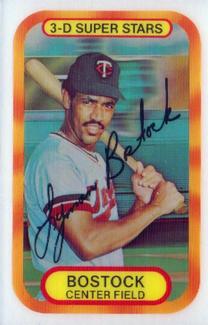ALL STAR HONORS, BUT...
It was 50 years ago that Harmon Killebrew was elected to his tenth All Star Game, in 1968. That, despite having a very uncharacteristic down season to that point, having hit only 13 homers, with 34 RBIs in his team's first 81 games, and a .204 ba / .347 obp / .392 slg / .739 ops.
It was 50 years ago that Harmon Killebrew was elected to his tenth All Star Game, in 1968. That, despite having a very uncharacteristic down season to that point, having hit only 13 homers, with 34 RBIs in his team's first 81 games, and a .204 ba / .347 obp / .392 slg / .739 ops.
It mirrored the Twins season to that point, as Minnesota was in fifth place (ten team American League), 15 games behind first place Detroit. But his street cred as a one of the leading sluggers of the 1960s played to his advantage.
However, the outcome would prove one of considerable peril for him and his livelihood, and also for his burgeoning status as an all-time Twins icon.
Season over, for all practical purposes. Off to the locker room to be met by crestfallen Twins
team owner Calvin Griffith.
Killebrew had held onto the ball for the putout, but in reaching for the throw, his lead,
left foot slipped in the soil around first base, causing him to overextend - such that
his hamstring took the brunt of the slip ("I heard it split like a rubber band" he said in a later
interview), and a small piece of bone pulled away from his pelvis.
interview), and a small piece of bone pulled away from his pelvis.
FIELDTECH
⍆The soil around first fine, was hardly optimal for a professional ball field. The science of groundskeeping in indoor ballparks was at a primitive stage in 1968, what with the Astrodome being the first indoor stadium in North America. The dirt was not hard-packed, but was more fine, granular, and lacking natural elements like wind, rain and sunshine to bake it firm. Hardly a good base of trust for a professional athlete ⍆
Hear Harmon's 2002 take on that play, and the aftermath, in which former MLB Commisioner Fay Vincent interviews him for this occurrence, and other facets of his career:
THE NBC BROADCAST
The video below offers an extended view of the 3rd inning, beginning as John Odom replaces
Luis Tiant on the mound for the American League. Again, you see:
The video below offers an extended view of the 3rd inning, beginning as John Odom replaces
Luis Tiant on the mound for the American League. Again, you see:
* Curt Flood bust ass out of the box on the sharp grounder in the hole
* Hear the non-sensical comment by color analyst Pee Wee Reese after the incident
about Killebrew not being "a gazelle," (as if that has any bearing on a hamstring injury)
* See Rod Carew, Jim Fregosi, and National League coaches Herman Franks (no. 23)
and Dave Bristol gather around Killebrew
* The very kind heckler in the crowd ("Get him off the field or get him a transplant!" -at the
4:31 mark) after Harmon is on the ground for an extended time
4:31 mark) after Harmon is on the ground for an extended time
* The reference by Curt Gowdy about defensive replacement "John" Powell (not yet universally
known as "Boog" yet).
known as "Boog" yet).
It just looks so benign when Harmon goes down, as if in slow motion. It totally belied
the seriousness of the injury, since a torn hamstring muscle of this severity is not
guaranteed to fuse back to normal position to ensure the performance and flexibility
needed by an athlete in any major sport. As Harmon states in the above audio, there were
many who believed he would never come back to form.
many who believed he would never come back to form.
| Down the corridor from the dugout to the Astrodome clubhouse |
AFTERMATH
The next four seasons would further cement Killebrew's Hall of Fame credentials:| Year | Age | HR | RBI | BB | BA | OBP | SLG | OPS | OPS+ |
|---|---|---|---|---|---|---|---|---|---|
| 1969 | 33 | 49 | 140 | 145 | .276 | .427 | .584 | 1.011 | 177 |
| 1970 | 34 | 41 | 113 | 128 | .271 | .411 | .546 | .957 | 159 |
| 1971 | 35 | 28 | 119 | 114 | .254 | .386 | .464 | .850 | 138 |
| 1972 | 36 | 26 | 74 | 94 | .231 | .367 | .450 | .817 | 138 |
| 22 Y | 22 Y | 573 | 1584 | 1559 | .256 | .376 | .509 | .884 | 143 |
| 162 | 162 | 38 | 105 | 104 | .256 | .376 | .509 | .884 | 143 |
| 144 | 466 | 481 | .258 | .398 | .511 | .911 | 153 |
Provided by Baseball-Reference.com: View Original Table
Generated 12/25/2018.
 |
| Rehabbing begins, July 11, 1968 |
Killebrew likely suffered a grade 2 hamstring tear, exactly in line with what Dr. O’Phelan below (right) described as a “relatively severe” injury, couching things in doctor-speak. Harmon hit exactly 25% of his career home run total of 573 over the next four seasons after the injury. Without his diligent workouts in the winter after the 1968 season, the 1969 MVP year, and the following, successful campaigns and $15K pay raises* after the next two years never would have happened. Nor, I would add, his eventual 1984 election to the Baseball Hall of Fame.
(Below: "Killer Out 6 Weeks..." from The Michigan Daily, July 11, 1968 - use controls to increase size, grab and pull to view).
“So long, everybody!” - Herb Carneal











